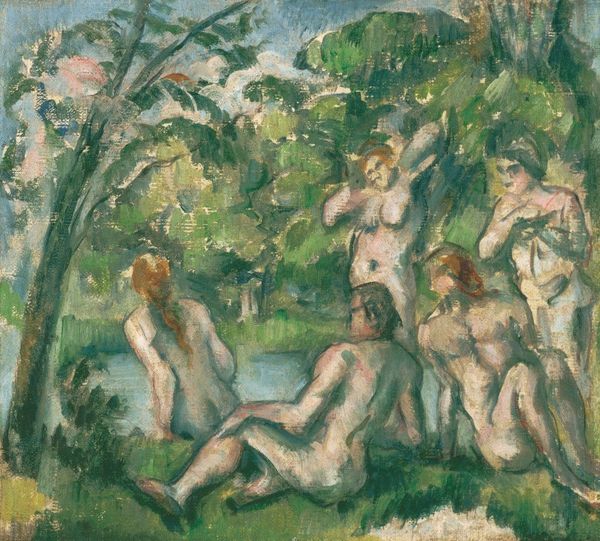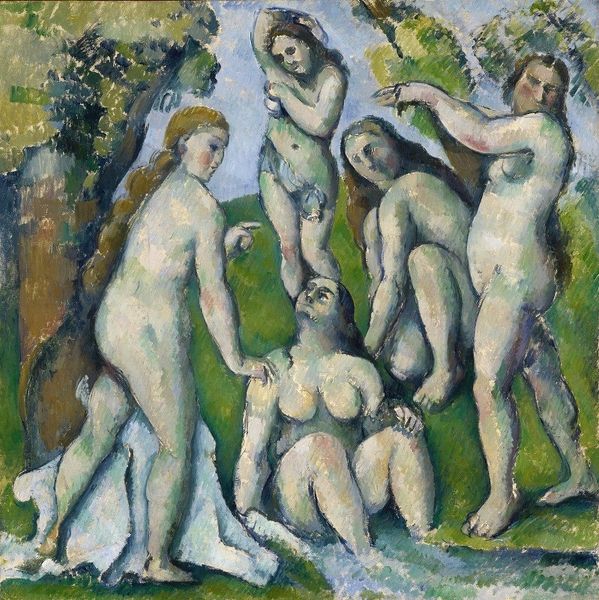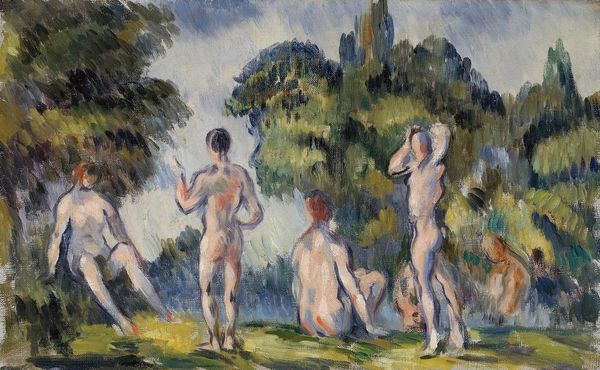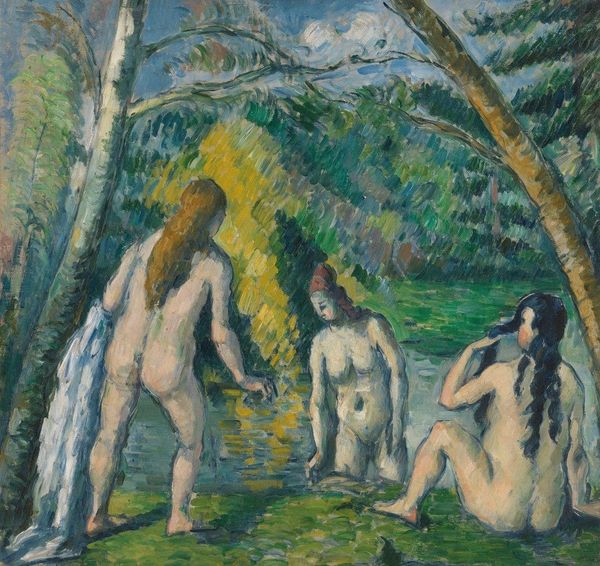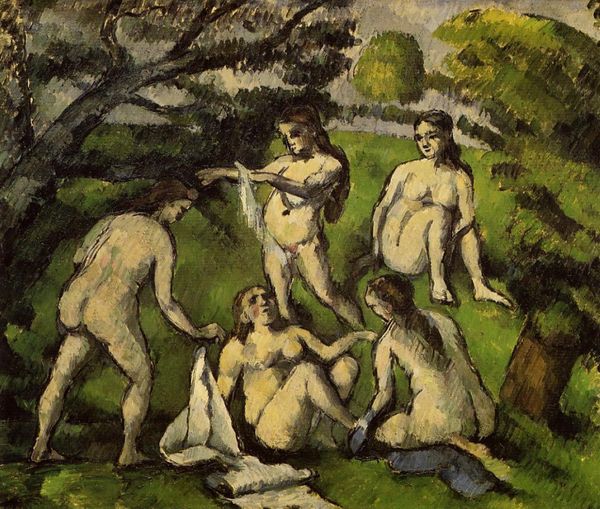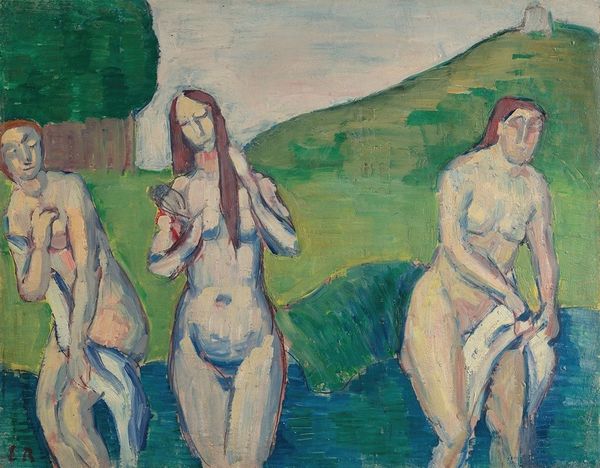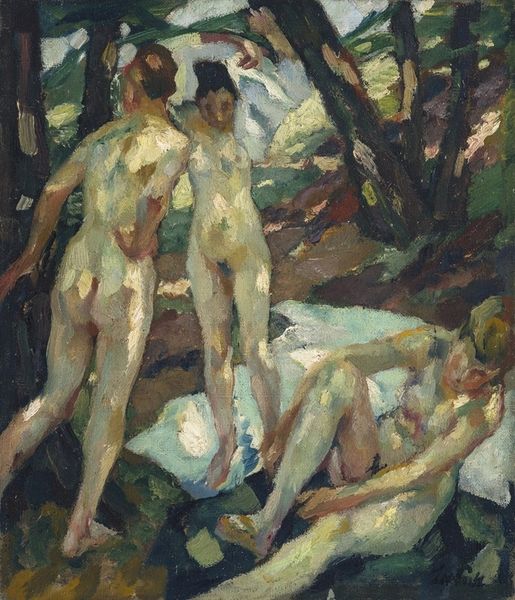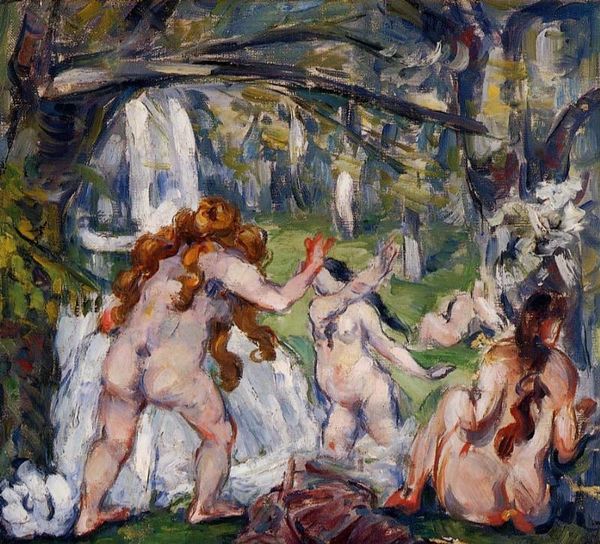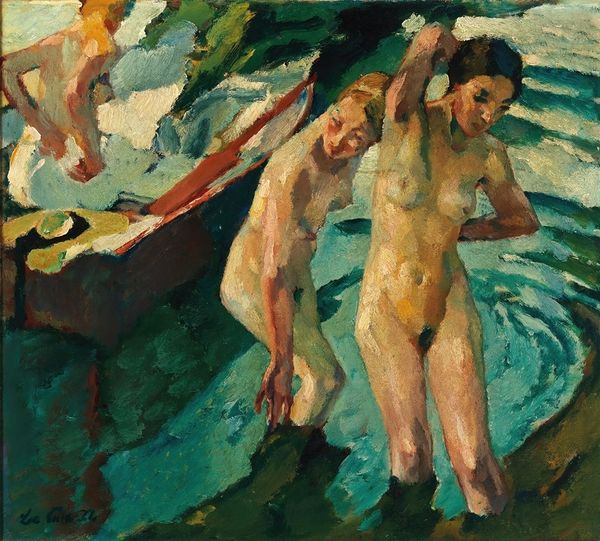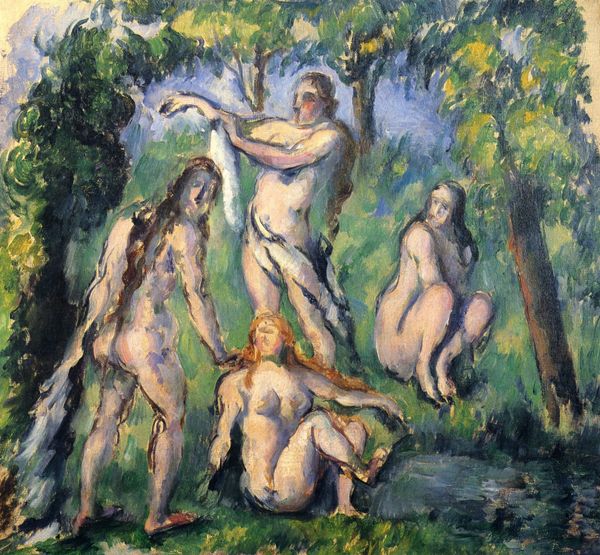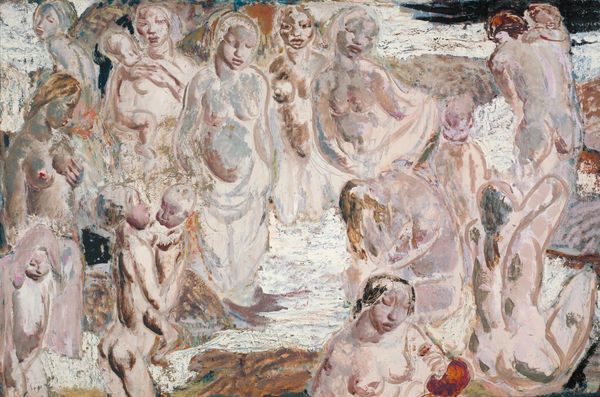
oil-paint
#
oil-paint
#
landscape
#
figuration
#
oil painting
#
genre-painting
#
post-impressionism
#
nude
Dimensions: 73 x 92 cm
Copyright: Public domain
Editor: We're looking at Paul Cézanne's "Four Bathers," painted around 1890, in oil on canvas. The first thing that strikes me is how the figures seem integrated into the landscape; it’s not quite the traditional figure-ground relationship. How would you interpret Cézanne's compositional choices here? Curator: Indeed, the interplay between form and space is crucial. Notice how Cézanne eschews linear perspective, flattening the picture plane. The brushstrokes, applied in parallel hatches, contribute to this effect. Each figure is constructed through planes of color, almost as if they are facets of a larger geometric whole. Do you see how the bodies echo the shapes of the trees, and vice versa? Editor: Yes, I see what you mean! It is almost as if he is interested in form, shapes, light and color alone, and less interested in a naturalist depiction of figures and ground. Curator: Precisely. This interest signifies Cézanne's movement towards abstraction, anticipating Cubism. One could also observe how the rhythmic application of pigment across the canvas creates a pulsating visual field, drawing our attention to the very act of painting itself. It also rejects academic modelling; Cézanne favored simplified forms that serve the overall composition. What does that imply to you? Editor: It means the painting functions more as a self-contained system than a window onto the world. That, to me, sounds truly modern! I appreciate how looking at the underlying structure reveals so much about Cézanne's revolutionary approach. Curator: I concur; we are appreciating Cezanne's radical reformulation of space, light, and form into autonomous painterly concerns.
Comments
No comments
Be the first to comment and join the conversation on the ultimate creative platform.

